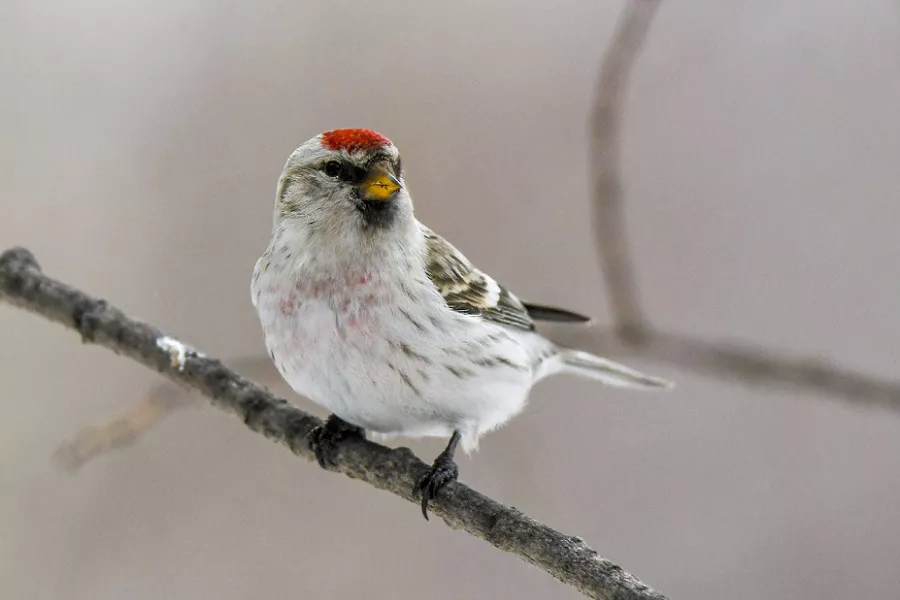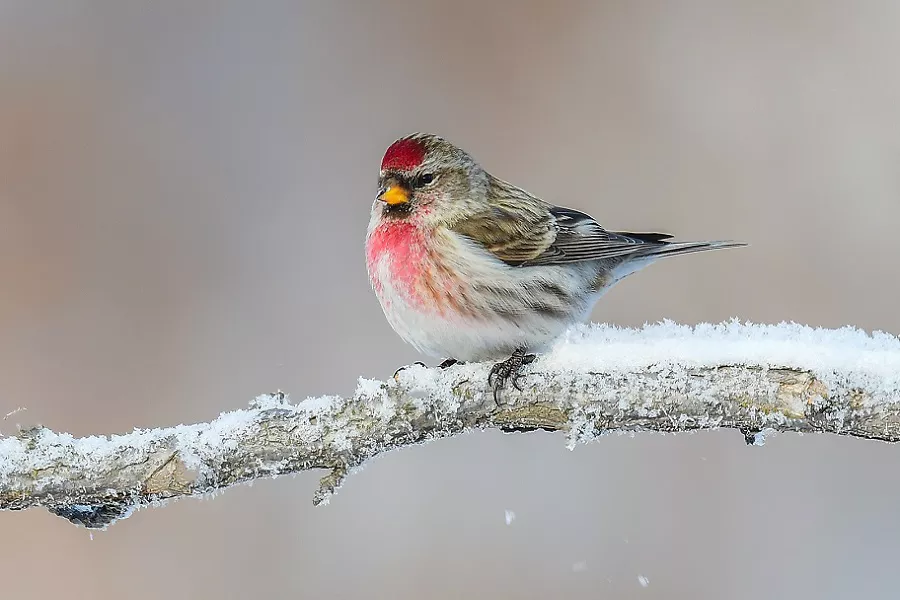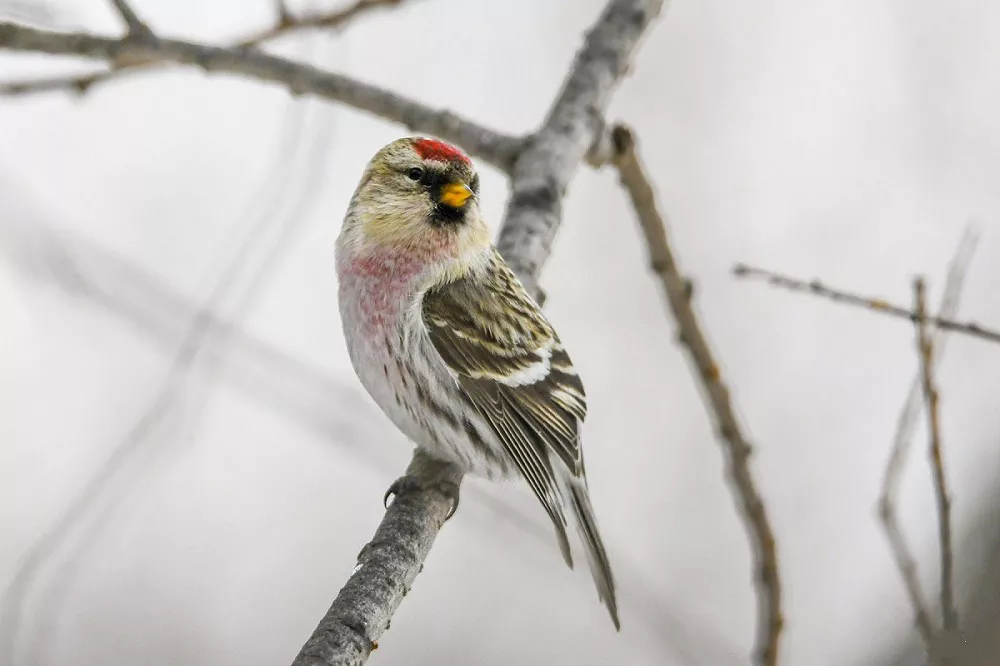Redpolls are small, lively finches known for their distinctive red caps and cheerful presence in northern habitats. Among these charming birds, two closely related species stand out: the Arctic Redpoll (Acanthis hornemanni) and the Common Redpoll (Acanthis flammea). While they share many similarities, subtle differences in appearance, behavior, and habitat preferences set them apart. Understanding these distinctions enhances both birdwatching experiences and conservation efforts. In this comprehensive guide, we delve into the nuances that differentiate Arctic and Common Redpolls across various aspects.
Physical Characteristics:
Size:
Arctic Redpolls are notably larger than Common Redpolls. On average, Arctic Redpolls measure around 6 inches (15 centimeters) in length, while Common Redpolls typically reach about 5.5 inches (14 centimeters).
Plumage:
Arctic Redpolls display paler coloration and fewer streaks compared to their Common counterparts. Their plumage is generally a softer shade of brown, with less distinct streaking on the breast and flanks. In contrast, Common Redpolls exhibit darker hues and more prominent streaking, especially on the breast and sides.
Bill Size:
One of the most noticeable differences between the two species lies in their bill size. Arctic Redpolls possess longer bills, which they use to extract seeds from cones and other plant structures. Common Redpolls, on the other hand, have shorter bills adapted for a similar seed-based diet but in different habitats.

Arctic Redpoll
Geographic Distribution:
Arctic Redpolls: As the name suggests, Arctic Redpolls primarily inhabit the Arctic regions, including northern parts of North America, Europe, and Asia. They are commonly found in tundra habitats, particularly during the breeding season.
Common Redpolls: In contrast, Common Redpolls have a wider distribution range, extending across the northern regions of North America, Europe, and Asia. They can also be found in forested areas, scrublands, and even urban environments.
Behavioral Traits:
Feeding Habits: Both Arctic and Common Redpolls primarily feed on seeds, especially from plants such as birch, alder, and willow. However, their feeding behaviors may differ slightly due to habitat preferences and bill morphology. Arctic Redpolls, with their longer bills, may specialize in extracting seeds from cones and other coniferous structures, whereas Common Redpolls may focus on different seed sources in their preferred habitats.
Vocalizations: Arctic Redpolls and Common Redpolls have distinct vocalizations that aid in species identification. Arctic Redpolls are known for their higher-pitched calls, which can be heard during the breeding season as well as during migration. Common Redpolls, meanwhile, have slightly lower-pitched calls that may vary in intensity depending on social interactions and environmental conditions.
Migration Patterns: Migration patterns vary between the two species, with Arctic Redpolls typically undertaking longer migrations compared to Common Redpolls. Arctic Redpolls may travel thousands of miles between their breeding grounds in the Arctic and wintering areas further south. In contrast, Common Redpolls may exhibit shorter migratory journeys, especially those individuals from more temperate regions.

Common Redpoll
Conservation Status:
Both Arctic and Common Redpolls are generally considered to be of least concern in terms of conservation status. However, specific populations, particularly those inhabiting more restricted or threatened habitats, may face localized threats such as habitat loss, climate change, and predation. Continued monitoring and conservation efforts are necessary to ensure the long-term survival of both species.
Conclusion:
In conclusion, distinguishing between Arctic Redpolls and Common Redpolls is essential for understanding their ecological roles, behaviors, and conservation needs. While they share similarities in terms of diet and habitat preferences, subtle differences in physical characteristics, geographic distribution, and behavior set them apart as distinct species. By studying and appreciating these differences, researchers and enthusiasts can contribute to the conservation and appreciation of these fascinating birds in their natural habitats.
Related topics:


 Facebook
Facebook  Instagram
Instagram  Youtube
Youtube 